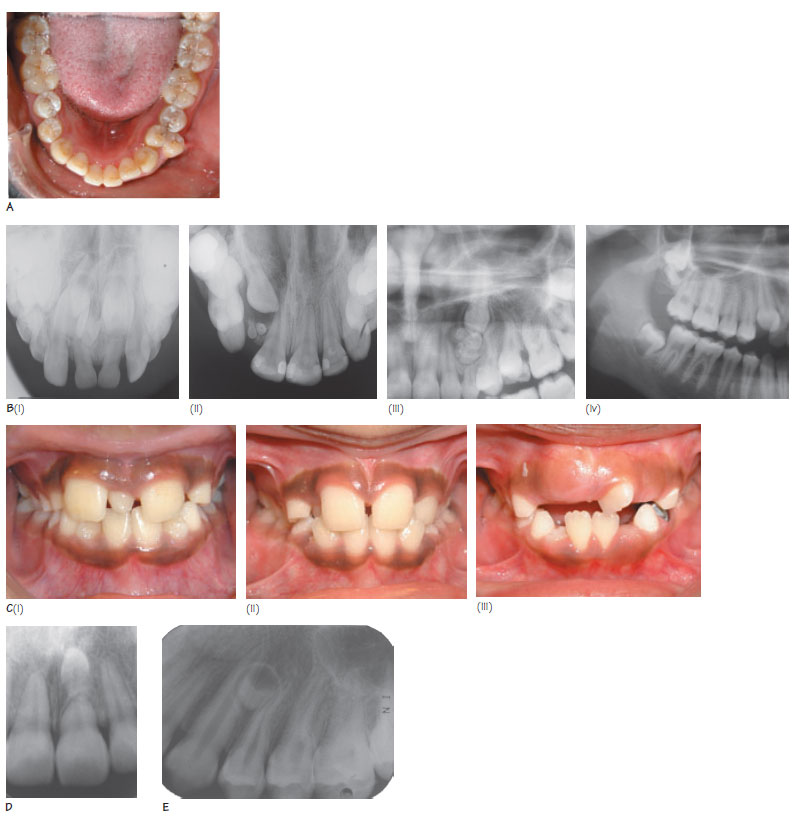34
Supernumerary teeth
Table 34.1 A comparison of the different types of supernumerary teeth.

Figure 34.1 (A) A supplemental lower left premolar. (B) Examples of supernumerary teeth impeding the eruption of premanent teeth, (i) Multiple supernumeraries preventing eruption of the maxillary central incisors, (ii) an odontome in the line of eruption of the upper right permanent lateral incisor, (iii) an odontome impeding the eruption of the upper left permanent canine and (iv) a supernumerary obstructing the eruption of the upper right third molar. (C) (i) A mesiodens causing lateral displacement of both central incisors, (ii) Six months after removal there has been spontaneous improvement in incisor position, (iii) An unerupted mesiodens causing rotation of the upper left central incisor. (D) An inverted conical supernumerary causing root resorption of the upper left central incisor. (E) A late-forming upper premolar.

Supernumerary teeth are defined as teeth in excess of the normal series. Males are twice as commonly affected than females with the following reported prevalences:
- 0.3–0.8 % in the primary dentition;
- 0.1–3.8% in the permanent dentition.
Supernumerary teeth occur 10 times more frequently in the maxilla than the mandible, with the premaxilla being most commonly affected followed by the mandibular premolar region. A supernumerary tooth in the primary dentition is likely to be followed by a supernumerary in the permanent dentition.
Etiology
Both genetic and environmental factors are probably involved in the development of supernumerary teeth. Developmentally, these teeth are thought to form due to hyperactivity of the dental lamina. Genetic factors may explain why supernumerary teeth can run in families, why males are more commonly affected than females and why supernumeraries can be associated with certain medical conditions.
Classification
Supernumerary teeth can be classified into four groups based on their morphology:
- Conical;
- Tuberculate;
- Supplemental;
- Odontomes.
Table 34.1 compares these four groups. Conical supernumeraries are the most common, often occur in the premaxilla and are termed mesiodens when they occur in the midline. />
Stay updated, free dental videos. Join our Telegram channel

VIDEdental - Online dental courses


